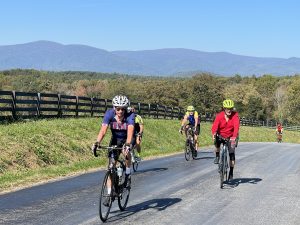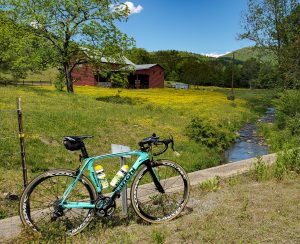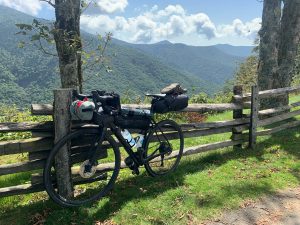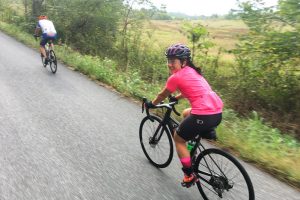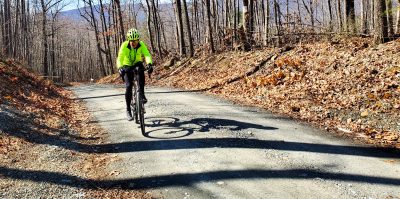Things To Know

CBC schedules hundreds of group rides of various speeds, distances, and terrains over the course of each year. Here are a few tips to help you have a fun, and most of all safe, experience.
Preparation
Pace: Scheduled rides are rated according to pace, terrain, and distance, as described in CBC’s Ride Classification guidelines. The group’s average pace may be slightly faster on flatter routes, lower on hillier routes. On most rides, cyclists typically “regroup often,” meaning faster riders will wait at major intersections and other critical points to allow all cyclists in the group to catch up. A “no drop” ride will be designated on the ride schedule. All riders are expected to know the route and to have a map, cue sheet, or navigation device with the course.
Coordinate With Other Riders: If you know other folks who ride at your level, we encourage you to arrange with them to come out on the same day so you are certain to have an appropriate group to ride with. Also, some of us enjoy the CBC rides at a slower pace and/or for a shorter distance. As the club continues to grow, we want to help riders of all abilities to coordinate with others with similar interests. If you are interested in helping to coordinate group rides of different paces or abilities, please contact us.
Not Sure? If you are unsure of how to begin please let us know; we’re eager to help you connect with other riders. You can submit your questions on our Contact Us page.
Guidelines for All Rides
Organize: At the beginning of a ride, people should organize themselves into groups and make sure they know with whom they will be riding. More experienced riders should take responsibility for knowing who is in the group and who is new. Less experienced riders may wish to identify themselves to others in the group; if you are unsure what group to join, ask any experienced rider for advice prior to leaving.
Keep Together: Each group should decide how and to what extent they will keep together, such as by counting heads, stopping to regroup at designated turns, etc. Less experienced riders should make every effort to stay with their group; if necessary, fall back to the next slower group after letting your group know you are doing so. Be prepared to navigate for yourself if necessary.
Take Responsibility: Please look out for each other. Take responsibility for your co-riders, both to ensure everybody’s safety of all and to make the ride a more sociable and enjoyable experience.
Requests for New Riders
Show up at least 15 minutes before the starting time. Bring a road-worthy bicycle, a helmet, and adequate fluids. Lights and a rear-view mirror are highly recommended, as is wearable identification, such as a Road ID. Often, but not always, we will pass a store at some point on the ride where we can stop for refreshments.
Be prepared to fix a flat tire by carrying a pump, a spare inner tube and/or patch kit, tire levers, etc. Even if you don’t know how to fix it yourself, you should have the necessary equipment so other riders can help you. Let a member know before the ride starts if you would need assistance.
Familiarize yourself beforehand with the route. We don’t expect you to memorize it, but cue sheets and maps for each route are available on its respective web page and each rider should have at least one or the other (or preferably both).
Review the Safety Information. Although the more experienced riders are expected to help ensure the safety of the group, ultimately you, and not the other riders or the CBC, are responsible for your own personal safety.
